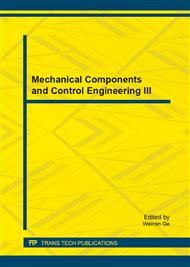p.39
p.43
p.48
p.52
p.56
p.60
p.64
p.70
p.74
Research on Electrical Discharge Grinding of Polycrystalline Cubic Boron Nitride Cutting Tool
Abstract:
Electrical discharge grinding is part of the most widely used methods to machine polycrystalline cubic boron nitride cutting tool. Polycrystalline cubic boron nitride compact samples processed in domestic with different grain size are the research object. Electrode running speed, peak current, and pulse width are selected as the main process parameters. The material removal volume and electrode loss set as the evaluation index of productive efficiency; workpiece surface roughness value sets as an evaluation standard of processing quality. Through electrical discharge grinding experiments, combined with scanning electron microscopy observation, energy spectrum analyzer and roughness tester, the influences of the main process parameters on electrical discharge grinding are analyzed, polycrystalline cubic boron nitride compact electrical discharge grinding technics & mechanism are summarized.
Info:
Periodical:
Pages:
56-59
Citation:
Online since:
October 2014
Authors:
Price:
Сopyright:
© 2014 Trans Tech Publications Ltd. All Rights Reserved
Share:
Citation:


